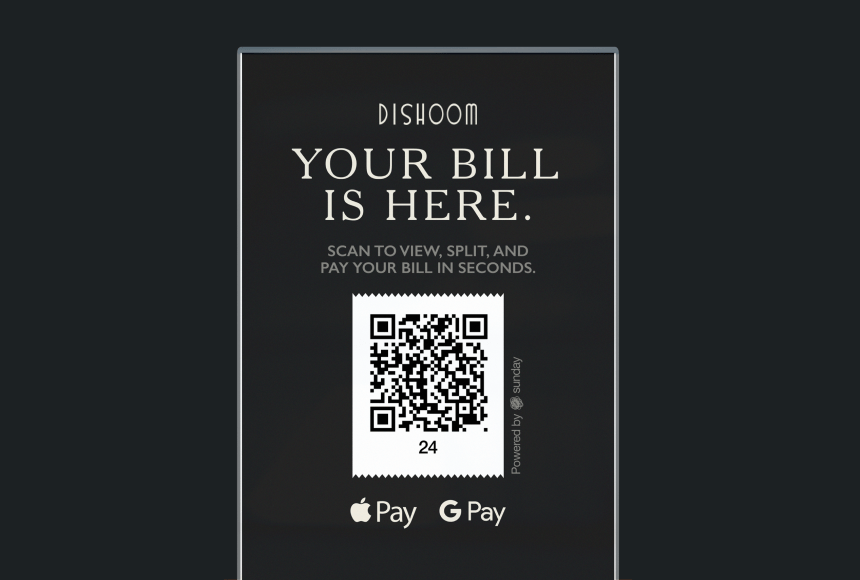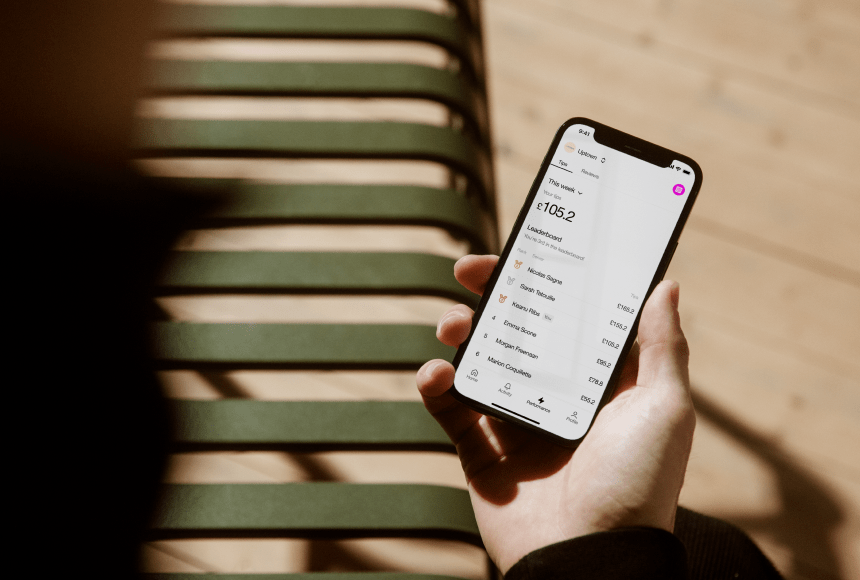
Making Busy Shifts More Manageable with On-the-Spot Checkout
Facing the Rush Hour Challenge
You know the scene. Your restaurant is jam-packed on a Friday evening, with every table booked and a queue of eager patrons at the door. Servers dash between tables delivering plates, taking orders, and ensuring customers are satisfied. Meanwhile, the kitchen is firing on all cylinders. You might be thinking, “Everything’s under control,” — until that wave of guests finishes their mains and collectively decides to pay. Suddenly, the card reader is in high demand, servers are scrambling to hand out bills, and a few customers look restless as they wait to settle up.
Sound familiar? If so, tableside payment could be your secret weapon. Instead of making staff run back and forth with a payment terminal or stand in line at the POS, you let diners take charge. They scan a quick QR code, tip if they like, and pay right from their phone. This small shift has a surprisingly big impact — especially when the dining room is at capacity and every second saved matters. Let’s explore how on-the-spot checkout helps you handle peak periods more gracefully and elevates your overall service.
What Is Tableside Payment and Why Does It Matter?
At its core, tableside payment is a simple concept. Instead of a server handing customers a printed bill and later bringing a card machine, guests can see their total on their phone or on a handheld device and pay immediately. Popular methods include QR codes that customers scan or small portable payment terminals.
In the UK, paying by contactless card has been widely adopted, but tableside payment goes one step further. It removes the wait for a device altogether. Once diners are ready to leave, they settle up with a few taps. This is a game-changer when everything else in your restaurant is running at full speed.
Beyond saving time, this approach feels modern, streamlined, and customer-centric. When patrons are used to ordering Ubers and groceries in seconds from an app, an equally frictionless experience at a restaurant feels natural. And for your staff, fewer frantic payment tasks free them to focus on what truly matters: a warm, attentive dining atmosphere.
How It Minimises Payment Delays and Congestion
During a rush, three big pain points typically emerge:
- The Bill Drop: A server is often busy with another table when a guest wants their bill. So the customer waits. Multiply this by several tables, and the delay compounds.
- The Card Reader Queue: You have a limited number of handheld terminals. If four tables simultaneously request the machine, some must wait while it cycles through others. Meanwhile, new guests might be waiting for those tables to free up.
- Split Payment Headaches: In bigger groups, dividing the bill can spark confusion and extra time spent re-checking who owes what. A series of card transactions can cause a queue for both the server and the machine.
Tableside payment tackles these issues head-on:
- Self-Service Option:Customers don’t need to hunt down a server when they’re finished. They pick up their phone, scan, and pay. No chasing staff, no waiting.
- Multiple Payment Channels:In a QR-based system, dozens of diners can pay at once if they need to. There’s no single device to pass around. Each table effectively has its own checkout on demand.
- Automated Splitting:Many platforms allow each diner to select their portion or items, removing complicated math from your staff’s workload. Less time spent dividing totals means more time taking new orders or clearing tables.
By resolving these bottlenecks, you reduce friction for both servers and diners. That’s huge in a high-intensity service window.
Faster Table Turnover, Higher Revenue Potential
A well-known benefit of smoothing out the payment step is quicker table turnover. When multiple parties finish close together, the last thing you want is for them to linger just because your staff can’t get to them promptly.
- Immediate Settlement:As soon as diners finish, they can pay and vacate the table if they wish. This eliminates that frustrating ten-minute gap where customers would be willing to leave, but are stuck waiting for the bill to arrive and be processed.
- Better Seating Efficiency:When outgoing guests pay in a snap, the host can seat new customers sooner. If you can fit an extra party or two per shift, your revenue climbs.
- Reduced Congestion Near the Till:In some venues, the final step involves guests queuing near a cash register or bar. Tableside payment disperses this traffic, keeping the dining area flow smooth.
Even small gains — say shaving off five minutes per table — can accumulate significantly over a busy night. And a more efficient use of space and time ultimately reflects on your bottom line.
Lifting the Load Off Your Servers
Your front-of-house team faces intense pressure during rush hours. They juggle order-taking, refills, special requests, and of course, clearing and resetting tables. By removing the need to handle each payment step, you lighten their load considerably.
- Less Machine-Sharing: No more staff waiting on a single card terminal or sprinting to locate it for each table.
- Reduced Waiter Bottlenecks: Freed from the chore of printing bills, collecting cards, punching data into a terminal, and printing receipts, servers have more time for genuine hospitality.
- Focus on Service, Not Admin: Instead of fussing over payment logistics, staff can chat with guests, recommend a dessert or after-dinner drink, and ensure all details are perfect.
This improved staff efficiency fosters better morale, since your team will spend fewer minutes dealing with logistical snags and more minutes doing what they love: providing top-tier service.
Boosting Tips and Encouraging Repeat Visits
Diners left waiting at the end of their meal can get restless. This final segment of the dining experience is crucial in shaping the lasting impression. Tableside payment keeps that impression positive and encourages a smooth exit.
- Polished Experience: Guests associate a quick, hassle-free checkout with professional, modern service. Happy diners are more inclined to tip generously.
- Transparent Tip Prompts: Many digital payment solutions, including Sunday, integrate tipping prompts directly into the checkout flow. Diners can add gratuities with a tap, which often raises tip percentages.
- Convenient Surveys or Reviews: Right after payment, you can invite guests to share feedback or drop a Google review. This is an excellent moment to capture their contentment while it’s fresh.
When customers feel they’ve had efficient service from start to finish, they’re more likely to return or recommend your restaurant to friends. That intangible goodwill can be as valuable as any direct upsell.
Enabling Diners to Pay on Their Own Time
During a rush, serving staff are constantly prioritising tasks. A customer might be ready to settle their bill, but a server is busy with another table’s order. Tableside payment flips this dynamic: diners choose when to check out, and the process takes place automatically, in parallel to your staff’s other responsibilities.
It’s a subtle shift but a meaningful one, giving guests control over their departure. They no longer feel neglected if a server is momentarily engaged elsewhere. The result: fewer frustrations, improved diner autonomy, and a general sense that your operation runs like a well-oiled machine.
Implementation Tips for a Smooth Rollout
If you’re convinced that tableside payment can mitigate chaos during peak service, here’s how to implement it effectively:
- Choose a Compatible System:Look for a solution that integrates with your existing POS or at least complements it. You don’t want to overhaul your entire cash register setup if you can help it.
- Train Your Staff:Servers should be able to explain to diners how it works, reassure them about security, and handle minor queries. If staff are confident, customers will adopt the new method more readily.
- Promote It Visibly:Tabletop signage, quick mentions from the host, or a note on the menu can direct diners to scan and pay. Some might not realise they have this option until you point it out.
- Offer Alternatives:A portion of customers, especially older guests, might still prefer paying via a card machine or in cash. Make it clear they can do so, so no one feels forced into an unfamiliar process.
- Gather Feedback and Adjust:After a couple of busy shifts, ask staff and customers about their experience. If certain tables or signage placements aren’t working, tweak them. Minor adjustments can make a big difference.
A thoughtful rollout ensures you don’t trip over small hurdles that might discourage adoption. Once everyone’s comfortable, the system can operate near-seamlessly, even in the busiest windows.
Addressing Potential Concerns
While tableside payment is gaining popularity, you might have a few lingering doubts:
- Does It Depersonalise Service?Not if you use it correctly. Your servers still interact with diners, answering questions, delivering food, and checking on satisfaction. The main difference is that the final payment step no longer demands manual staff intervention.
- Is It Secure?Reputable payment solutions protect credit card details with encryption and meet PCI compliance. Some diners already use phone-based payments daily, making the security aspect second nature for them.
- Will My Staff Resist Another Tech Layer?Servers often discover it makes life easier. Instead of juggling card readers, they focus on genuine hospitality. If you provide proper training, most staff adapt quickly.
Open communication and a bit of tech introduction can calm these fears. Once people see how well it works during a busy shift, adoption tends to take off.
Restaurant Spotlight: A Frenetic Weekend Scenario
Imagine a cosy Italian trattoria that’s jam-packed each Saturday night. Historically, the biggest choke point occurred between 8:00 and 8:30 pm, when a wave of diners finished their mains and simultaneously requested the bill. Servers would juggle multiple card machines, sometimes losing track of which table had paid or if an automatic gratuity applied.
Upon adopting a QR-based payment system, the trattoria observed two changes almost immediately:
- Lower Staff Stress:Servers no longer dreaded that “everybody wants to pay now” moment, as half the tables would handle it themselves within minutes.
- Quicker Table Reset:Freed from payment tasks, staff began clearing and resetting tables faster. Host stand logs indicated a 15-minute reduction in average table turn time on peak nights.
Those gains in efficiency spilled over into more overall seats served each weekend, a calmer vibe for employees, and an improved impression for guests.
Looking Beyond the Rush: Ongoing Advantages
While this article focuses on the “rush hour” benefits, it’s worth noting that tableside payment helps throughout the day. Lunch services, midweek dinners, or even quiet afternoons can benefit from:
- Smoother Turnover: With less staff involvement, you speed up the entire dining cycle even when it’s not hectic.
- Reduced Device Bottlenecks: Even when volume is moderate, having a single card machine can cause annoyance if multiple servers need it. More convenient payment options kill the queue entirely.
- Remote Order Checks: Some solutions also let customers revisit the menu or see itemised orders on their phone, reducing confusion about the final tally.
So even though it’s a star performer when you’re slammed, tableside payment remains useful all day long.
Seizing the Potential for a Better Dining Experience
In the big picture, adopting on-the-spot payment is about more than just shaving a few minutes off the checkout process. It’s part of creating a seamless, contemporary guest experience from the moment customers walk in the door to the moment they leave.
When diners sense that everything runs smoothly — from ordering to paying — they feel more comfortable. Comfort and convenience often translate into higher satisfaction, bigger tips, and word-of-mouth recommendations. And for you, the restaurant owner, fewer staff hours wasted on purely transactional tasks means more focus on delivering memorable hospitality.
So, if you’re looking for a straightforward way to handle peak hours, reduce wait times, and elevate your service game, it might be time to explore tableside payment. With minimal disruption to your existing setup, you can drastically improve your team’s workflow and your guests’ impression. Because the best rush hour is one that feels like a breeze, not a battle.
Find out more today
Drop us your details below and we’ll reach out within the next 24
“Bill please” is a thing of the past.
With our integrated QR codes your customers pay in seconds, straight from their table.


